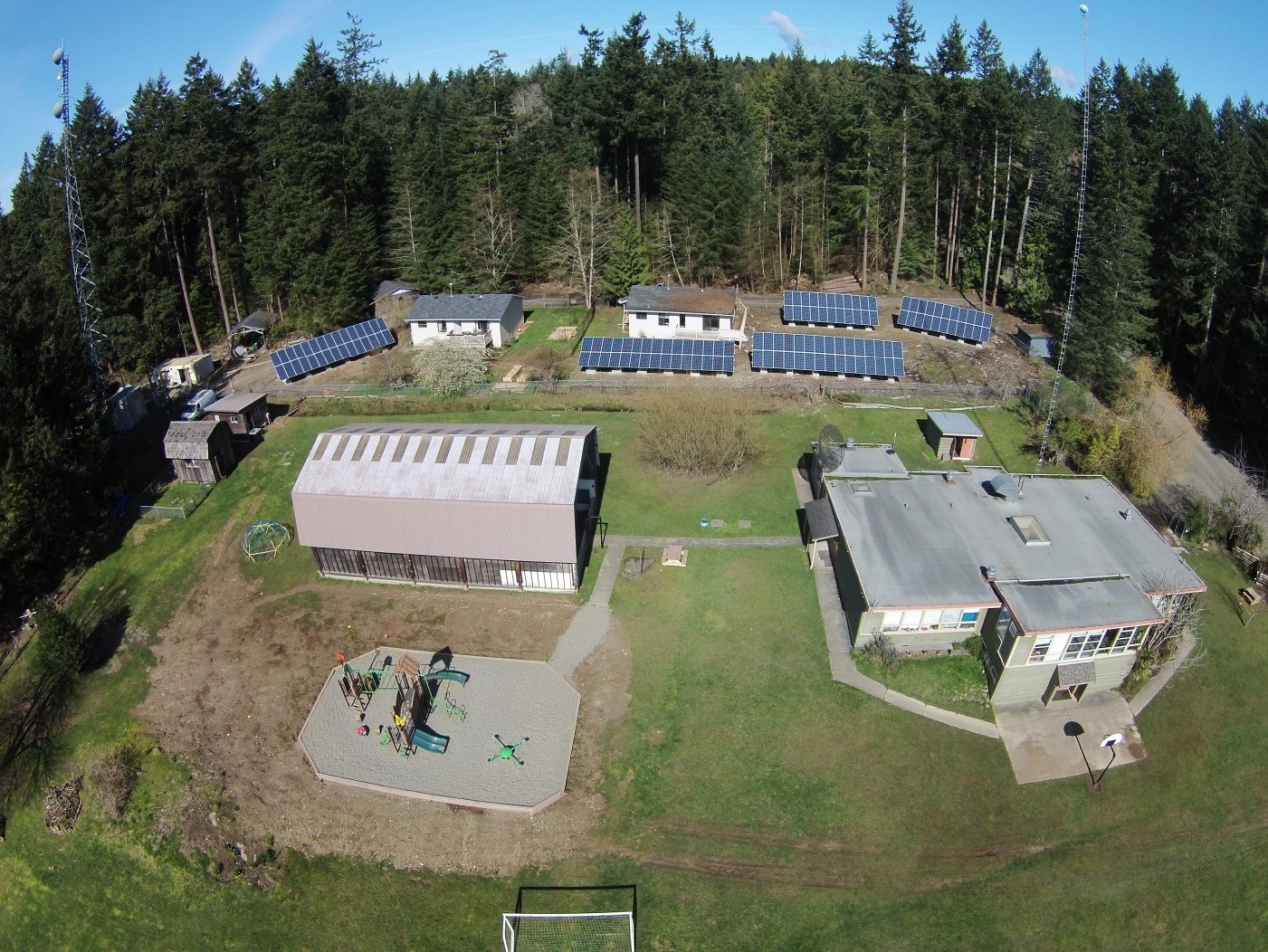BC Remote Community Integrated Energy (BCRCIE) Project
Lead proponent: Province of BC
Location: Lasqueti Island, BC
ecoEII contribution: $ 203 K
Project total: $ 453 K
Project Background
Lasqueti Island is a remote island in the Georgia Strait east of Vancouver Island with a population of about 400. The island has no hydro grid, no natural gas piping, and no car ferry. Regular transportation to Lasqueti is by passenger-only ferry. Supplies of gasoline, diesel and propane arrive by a tank truck carried on a landing barge from Vancouver Island. False Bay School (FBS) provides K-8 education for approximately 20 students on Lasqueti Island. The two-classroom school was equipped with a diesel generator for electrical power and was run for about 12 hours each day.
In 2009, the head teacher at FBS became increasingly concerned that the school’s complete reliance on fossil fuel was not consistent with the community’s values. He approached the local government and community association for help, which generated interest in many Islanders. The students and parents of FBS (including Doug Hopwood who would eventually become the Project Manager) proceeded to develop a fundraising strategy, write grant proposals, and plan and implement fundraising activities. Over the next 3 years, funding was secured from various sources including ecoEII and the project was expanded to include the community’s Health Centre. The Province of British Columbia, through the BC Ministry of Energy and Mines, applied for ecoEII funding on behalf of the Lasqueti community and two other remote communities in B.C. The BC Remote Community Integrated Energy (BCRCIE) Project was awarded $203K from ecoEII to demonstrate the technical and economic feasibility of using solar photovoltaic (PV) combined with battery storage in order to reduce diesel use in small off-grid systems. BCRCIE initially incorporated three sub-projects in three B.C. remote communities. However, only Lasqueti’s project (Lasqueti Community Integrated Energy Project) went ahead.
Results

Aerial photo of False Bay School buildings and grounds, including 134 solar PV modules installed on site.
Initial analysis was performed with RET Screen, and more detailed follow-up analysis with HOMER (Hybrid Optimization of Multiple Energy Resources). Load profile data was used to determine the optimal PV array and battery size. Two solar-diesel hybrid systems were installed: 42 kW PV capacity at FBS and 13 kW PV capacity at Judith Fisher Health Centre. The Health Centre provides permanent facilities for the local nurse, medical equipment and supplies, and rooms for exams and medical services. Both FBS and Health Centre systems have SMA Sunny Boy 7 kW and/or 9 kW solar inverters, SMA Sunny Island 6 kW off-grid inverters, and Global Yuasa 85T27 flooded lead-acid batteries.
One of the challenges of a solar/diesel hybrid electrical system (with battery storage) is ensuring that the combined system optimizes solar input and minimizes fuel consumption. In practical terms, this comes down to how the generator is programmed to start and stop. The SMA solar inverters are capable of starting and stopping the generator, but only based on a limited set of criteria. Therefore, a simple generator scheduling computer was installed and programmed to function as a “smart control system”. A comprehensive monitoring system was also installed. These web-accessible systems can read weather forecasts from internet, calculate expected PV output, look up and/or learn typical daily load profiles, read parameters from Sunny Island (e.g. state of charge) via SUNNY WEBBOX Modbus® Interface, determine optimum generator start/stop times, and alter Sunny Island parameters to cause the generator to start/stop.
Benefits to Canada
Preliminary results indicate that the expected reduction in diesel consumption (relative to a diesel-only system with battery storage) would be about 65% at FBS and 75% at the Health Centre. These savings, over several years would greatly benefit the community of Lasqueti Island and reduce overall GHG emissions for the province and Canada.
Next Steps
The monitoring and control system developed will be used for educational and research purposes, such as a renewable energy education program at FBS. Performance data collected will be essential for further refinement of the generator scheduling computer as well as other possible research projects on remote off-grid solar-diesel hybrid systems.
Page details
- Date modified: